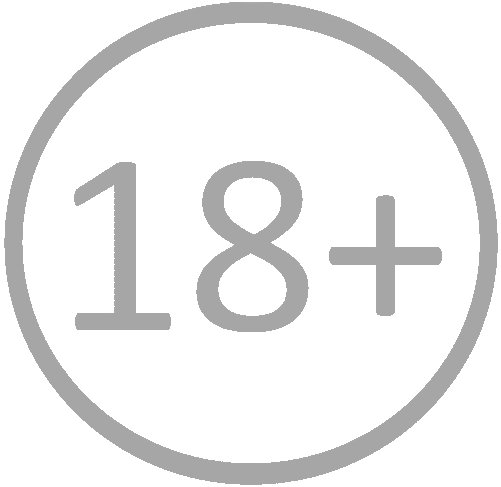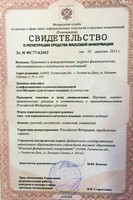ПИНДАР, СЕДЬМАЯ НЕМЕЙСКАЯ ОДА: ПРЕДИСЛОВИЕ, ПЕРЕВОД И КОММЕНТАРИЙ
Аннотация
В победных одах, написанных для атлетов с острова Эгина, выбор мифологических сюжетов почти всегда связан с мифологией острова. Среди героев, доминирующих в эгинетских эпиникиях, – Эак, первый царь Эгины, и его потомки: Пелей, Теламон, Ахилл, Аякс и Неоптолем. Седьмая Немейская ода, чествующая Согена, победителя в пятиборье среди мальчиков, – не исключение; основной мифологический сегмент оды посвящен Неоптолему. Во времена Пиндара Неоптолем славился неуемной жестокостью: в киклических поэмах «Разрушение Илиона» и «Малая Илиада» Неоптолем убивает Приама на алтаре Зевса и сбрасывает Астианакса, сына Гектора и Андромахи, с городской стены, а в Шестом пеане (пеан написан Пиндаром ранее Седьмой Немейской оды) Аполлон мстит Неоптолему за убийство Приама и поражает его в Дельфах во время жертвоприношения. Во вступительной статье к переводу рассматривается лирический метод Пиндара, нацеленный на «смягчение» традиционного образа Неоптолема за счет внесения корректив в привычное восприятие фигуры греческого героя: например, Пиндар не упоминает о жестокости Неоптолема; после гибели от рук жреца Неоптолем остается в Дельфах «наблюдать справедливо обильные жертвами шествия в честь героев», т. е. фактически становится помощником Аполлона. Пиндар на примере Неоптолема демонстрирует заказчику оды (оду заказал Феарион, отец Согена), что посмертная слава атлета не менее важна, чем его прижизненная репутация.
Ключевые слова: Пиндар, эпиникий, победные оды, Немейские оды, Неоптолем, Гомер, Одиссей, Аякс, Эакиды, Эгина.
DOI 10.18522/2415-8852-2020-3-95-112
Полный текст:
PDFЛитература
Хёльшер, Ф. Аякс и Неоптолем в изобразительном искусстве: как греки осмысляли жестокость своих героев / пер. О.Л. Ахуновой (Левинской) // Шаги/Steps. 2020. Т. 6. № 2. С. 130–143.
Boardman, J. (1971). Odette TouchefeuMeynier: Th emes odysseens dans l’art antique. The Classical Review, 21, 143.
Bundy, E. (1962). Studia Pindarica (Vols. 1–2). Berkeley: University of California Press. Bury, J.B. (1890). The Nemean odes of Pindar. Introduction and commentary. London: Macmillan and Co.
Carey, C. (1981). A commentary on five odes of Pindar: Pythian 2, Pythian 9, Nemean 1, Nemean 7, Isthmian 8. Salem: Th e Ayer Company.
Farnell, L.R. (1932). The works of Pindar, translated, with literary and critical commentaries. London: MacMillan and Co.
Gerber, D. (1963). Pindar Nemean 7.31. American Journal of Philology, 84, 182–188.
Gildersleeve, B.L. (1910). Th e Seventh Nemean revisited. American Journal of Philology, 31, 124–153.
Griffi th, R., & D’Ambrosio-Griffi th, G. (1988). La Couronne Chryséléphantine de la Muse (Pindare, Ném 7.77–79). L’Antiquité Classique, 57, 258–266.
Harris, H.D. (1972). Th e method of deciding victory in the pentathlon. Greece and Rome, 19(1), 60–64.
Lee, H.M. (1976). Th e τέρμα and the javelin in Pindar, Nemean VII.70–73, and Greek Athletics. The Journal of Hellenic Studies, 96, 70–79.
Lloyd-Jones, H. (1973). Modern interpretation of Pindar: the second Pythian and seventh Nemean odes. The Journal of Hellenic Studies, 93, 109–137.
Most, G. (1985). The measures of praise: structure and function in Pindar’s second Pythian and seventh Nemean Odes. Hypomnemata. Göttingen: Vandenhoeck & Ruprecht.
Nagy, G. (1990). Pindar’s Homer. The lyric possession of an epic past. Baltimore: Th e Johns Hopkins University Press.
Polinskaya, I. (2013). A local history of Greek polytheism: gods, people and the land of Aegina, 800–400 BCE. Leiden / Boston: Brill.
Race, W.H. (1990). Style and rhetoric in Pindar’s odes. Atlanta: Scholars Press.
Scholia in Pindarum. Nemean Odes. (n.d.). [Электронный ресурс]. URL: https://scaife.perseus. org/reader/urn:cts:greekLit:tlg5034.tlg001c. perseus-grc1:1.1-1.42?highlight&q=&qk=form (дата обращения: 01.06.2020).
Segal, C. (1967). Pindar’s seventh Nemean. TAPA, 98, 431–480.
Slater, W.J. (1963). Futures in Pindar. Classical Quaterly, 19, 86–94.
Slater, W.H. (Ed.). (1969). Lexicon to Pindar. Berlin: Walter de Druyter & Co.
Steiner, D. (2001). Slander’s bite: Nemean 7.102–5 and the language of invective. The Journal of Hellenic Studies, 121, 154–158.
Steiner, D. (1986). The crown of song. Metaphor in Pindar. Oxford: Oxford University Press.
Sweet, W.E. (1983). A new proposal for scoring the Greek pentathlon. Zeitschrift für Papyrologie und Epigraphik, 50, 287–290.
Tugendhat, E. (1960). Zum Rechtfertigungsproblem in Pindars 7 nemeischen Gedicht. Hermes, 88, 385–409.
Young, D.C. (1970). Pindar Nemean 7: some preliminary remarks (Vols. 1–20). TAPA, 101, 633–643.
References
Boardman, J. (1971). Odette TouchefeuMeynier: Th emes odysseens dans l’art antique [Odette Touchefeu-Meynier: Odyssey themes in ancient art]. The Classical Review, 21, 143.
Bundy, E. (1962). Studia Pindarica (Vols. 1–2). Berkeley: University of California Press.
Bury, J.B. (1890). The Nemean odes of Pindar. Introduction and commentary. London: Macmillan and Co.
Carey, C. (1981). A commentary on five odes of Pindar: Pythian 2, Pythian 9, Nemean 1, Nemean 7, Isthmian 8. Salem: Th e Ayer Company.
Farnell, L.R. (1932). The works of Pindar, translated, with literary and critical commentaries. London: MacMillan and Co.
Gerber, D. (1963). Pindar Nemean 7.31. American Journal of Philology, 84, 182–188.
Gildersleeve, B.L. (1910). Th e Seventh Nemean revisited. American Journal of Philology, 31, 124–153.
Griffi th, R., & D’Ambrosio-Griffi th, G. (1988). La Couronne Chryséléphantine de la Muse (Pindare, Ném 7.77–79) [Th e chryselephantine crown of the muse (Pindare, Ném 7.77–79) t]. L’Antiquité Classique, 57, 258–266.
Harris, H.D. (1972). Th e method of deciding victory in the pentathlon. Greece and Rome, 19(1), 60–64.
Hölscher, F. (2020). Ayaks i Neoptolem v izobrazitel’nom iskusstve: kak greki osmyslyali zhestokost’ svoikh geroyev [Ajax and Neoptolemus in the visual arts: how the Greeks interpreted the cruelty of their heroes]. Steps, 6(2), 130–143.
Lee, H.M. (1976). Th e τέρμα and the javelin in Pindar, Nemean VII.70–73, and Greek Athletics. The Journal of Hellenic Studies, 96, 70–79.
Lloyd-Jones, H. (1973). Modern interpretation of Pindar: the second Pythian and seventh Nemean odes. The Journal of Hellenic Studies, 93, 109–137.
Most, G. (1985). The measures of praise: structure and function in Pindar’s second Pythian and seventh Nemean Odes. Hypomnemata. Göttingen: Vandenhoeck & Ruprecht.
Nagy, G. (1990). Pindar’s Homer. The lyric possession of an epic past. Baltimore: Th e Johns Hopkins University Press.
Polinskaya, I. (2013). A local history of Greek polytheism: gods, people and the land of Aegina, 800-400 BCE. Leiden/Boston: Brill. Race, W.H. (1990). Style and rhetoric in Pindar’s odes. Atlanta: Scholars Press. Scholia in Pindarum. Nemean Odes. (n.d.). Retrieved from: https://scaife.perseus.org/ reader/urn:cts:greekLit:tlg5034.tlg001c.perseusgrc1:1.1-1.42?highlight&q=&qk=form (дата обращения: 01.06.2020).
Segal, C. (1967). Pindar’s seventh Nemean. TAPA, 98, 431–480.
Slater, W.J. (1963). Futures in Pindar. Classical Quaterly, 19, 86–94.
Slater, W.H. (Ed.). (1969). Lexicon to Pindar. Berlin: Walter de Druyter & Co.
Steiner, D. (2001). Slander’s bite: Nemean 7.102–5 and the language of invective. The Journal of Hellenic Studies, 121, 154–158.
Steiner, D. (1986). The crown of song. Metaphor in Pindar. Oxford: Oxford University Press.
Sweet, W.E. (1983). A new proposal for scoring the Greek pentathlon. Zeitschrift für Papyrologie und Epigraphik, 50, 287–290.
Tugendhat, E. (1960). Zum Rechtfertigungsproblem in Pindars 7 nemeischen Gedicht [On the justifi cation problem in Pindar‘s 7 Nemean poem]. Hermes, 88, 385–409.
Young, D.C. (1970). Pindar Nemean 7: some preliminary remarks (Vols. 1–20). TAPA, 101, 633–643.
Ссылки
- На текущий момент ссылки отсутствуют.
(c) 2020 Григорий Геннадьевич Стариковский
ISSN 2415-8852
Свидетельство о регистрации СМИ Эл № ФС77-62683 от 10 августа 2015 г.
Регистрирующий орган: Федеральная служба по надзору в сфере связи, информационных технологий и массовых коммуникаций (Роскомнадзор)
УЧРЕДИТЕЛЬ: ФГАОУ ВО "Южный федеральный университет".
344006, г. Ростов-на-Дону, ул. Большая Садовая, 105/42,
тел. +7 (863) 218-40-00 E-mail: info@sfedu.ru
Адрес редакции: 344006, г. Ростов-на-Дону, пер. Университетский, 93, к. 8, тел. +7(903) 43-12-321
e-mail: oadzhumaylo@sfedu.ru

Произведения доступны по лицензии
Creative Commons «Attribution» («Атрибуция») 4.0 Всемирная.

